- Bernard Preston homepage
- Starch
- What Is Starch in Food
What is starch in food?
What is starch in food is central to preparing our meals. Are potatoes, pasta and breakfast cereals bad for us?
Starches are made up primarily of two forms.
- Amylopectin is a highly-branched chain of sugar units making up about 75% of the starch. It is very readily digested by enzymes producing a flood of glucose molecules.
- Amylose is a long string of tightly-coiled glucose units making up about 25%; it is more slowly digested.
The starch is in a crystalline form which, when heated in water goes through a process called gelatinisation as the granules begin to swell.
Cooling the cooked starch re-establishes the crystalline form; this is known as retrogradation. Enzymes then have more difficulty breaking up the chains of sugars; the glucose is released more slowly.
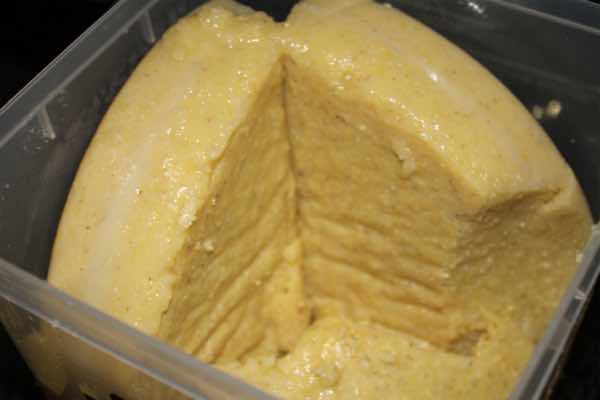 Cooling recrystallizes corn grits turning it into resistant gelatinised starch
Cooling recrystallizes corn grits turning it into resistant gelatinised starchThese are important concepts; they greatly influence how rapidly the carbs are digested and absorbed in the gut. Is starch good for you? Retrogradation of hot breads, porridges and soups is the key.
With nearly 50% of people eating modern grocery-store food being either fully or prediabetic, this has great importance.
Is starch good for you?
This is an important question but not one that can be answered simply or even ignored. Refined grains gelatinise more quickly; they take a shorter time to cook.
Fat, protein and fibre slow the process of gelatinisation, hampering the action of the enzymes. Sugars are released more gradually; the glycemic index is reduced.
Put differently the extraction of fat, protein and fibre from a grain in the refining process, speeds up the process of gelatinisation; it takes less time to cook, pleasing Mom. But when eaten the enzymes in the gut are more easily able to digest the starch, raising the glycemic index; the sugars are released faster and are absorbed readily into the portal blood stream.
Is starch good for you? It's certainly not bad unless the fat, protein and fibre have been extracted; then it becomes highly glycemic, raising blood glucose unnecessarily. Refined carbohydrates, eaten regularly and frequently, ultimately stress the pancreas making us insulin-resistant; our cells are unable to take up the excess sugars.
Research consistently shows on the other hand that unrefined starches, those which have all the fat, protein and fibre components promote wellness and help fight off disease; they are so-called functional foods.
What is a resistant starch?
Resistant starch as implied by the name is either digested slowly by enzymes in the small intestine or not at all. Most of it reaches the colon where it supplies nutrients and energy to the friendly flora known as the microbiome.
These helpful gut bacteria, viruses and yeast cells are completely dependent on dietary resistant starch. They are inhibited by grains from which the fibre, fat and protein have been extracted.
Feeding the microbiome with resistant starch is essential for human health.
Research has clearly shown that ketogenic diets, low in resistant starch, diminish both the diversity of the microbiome and the bacterial levels; beneficial anti-inflammatory species are reduced and pathogens are more likely to find a welcoming home[2].
This may be countered by the daily consumption of fermented dishes such as kefir and sauerkraut; but an inadequate pre-biotic food supply remains problematic. Fibre is essential; when extracted from grains the helpful bugs starve.
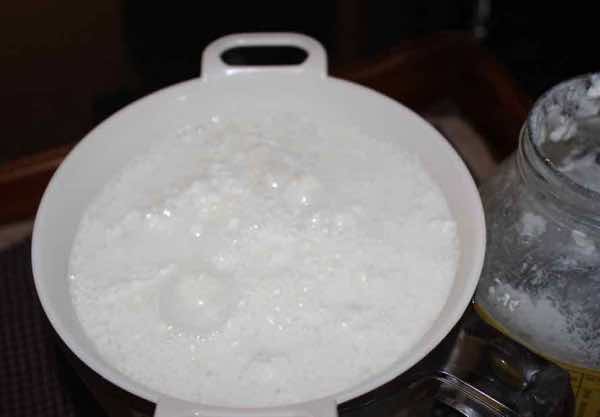 It takes only five minutes to make kefir
It takes only five minutes to make kefirPotatoes
Potatoes are made up predominantly of the highly-branched starch fraction called amylopectin; it is very readily digested and has a high GI.
Potatoes grown in the cooler months have a 25% lower starch component[4].
Freshly-lifted new potatoes have a much higher resistant starch component; they have a low GI. However they are not commonly available.
Mashed new potatoes with sauerkraut make a delicious dish, high in resistant starch and rich in probiotics.
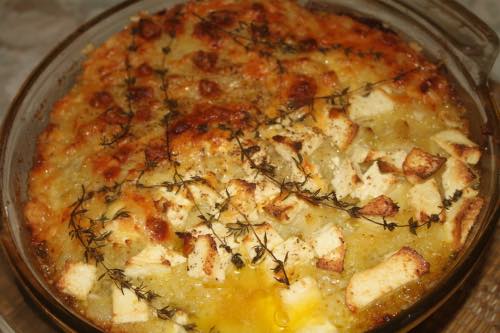 Mashed potatoes and sauerkraut
Mashed potatoes and sauerkrautThis traditional Swiss rösti recipe has a low GI when made with new potatoes, particularly if some summer zucchini squash is added to the ingredients.
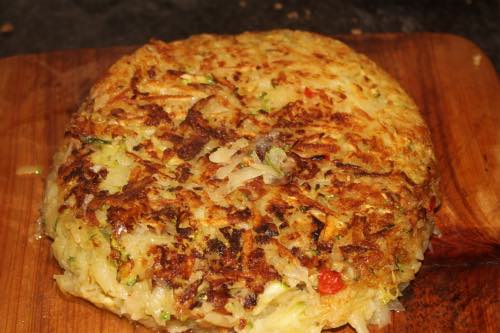
What is starch made of?
So starches are made of glucose molecules combined in different ways. How rapidly they are digested and turned into sugars in the blood stream is highly complex.
"Researchers determined that patients taking insulin would benefit from CGM monitoring; there were fewer glycemic highs and lows."
- Dr Anne Peters, Keck School of Medicine[3]
In fact it is our standpoint that all those who are insulin-resistant, nearly 50% of the population would benefit from using a CGM for two weeks every year.
Are legumes good for you?
Legumes do have some starch but most of it is amylose; the form that is more resistant to enzyme action because of its helical structure. They also have large amounts of fibre and protein which further restrict the rapid formation of glucose in the gut. They are often eaten with grains to lower the GI of wheat, corn and rice.
Succotash, a mixture of corn and beans is one example for the American Indian; stamp and maas is another for the Zulu people.
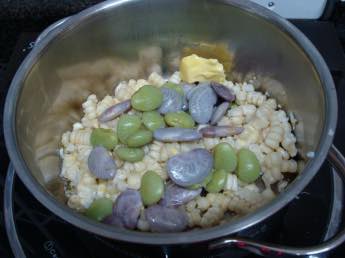
Another example is the addition of chickpea flour to bread dough to lower the glycemic response. This can also be done by using hummus which is high in vegetable protein, olive oil and fibre.
Electron microscopy shows that the starch granules from the wheat and chickpea flour after baking are coated with protein, lowering the glycemic response.
The action of amylase, the enzyme that digests starch is significantly lower when chickpea flour is added to white, brown or wholewheat bread[1]; it is inhibited by the extra protein.
"A number of studies have shown that chickpea flour has proteinaceous fractions which inhibit the α-amylase activity."
- International Journal of Food Science[1]
There are numerous studies that show that adding chickpea flour to bread dough is beneficial for those suffering from raised blood glucose and hypertension.
What is disturbing is that there is no difference in the glycemic response to white or wholewheat bread; both have equally high GIs. Whilst 100% flour is simply not available commercially, and thus not tested, my own experience is that it too raises blood glucose to unacceptable levels; unless one adds a tablespoon of hummus to the dough.
There are many other benefits from 100% wholegrain but a lower glucose response is not one of them. Home bakers simply must add chickpea flour or hummus to the dough; or have a legume dish with the meal. The added protein masks the starch molecules, interfering with the enzymes that are present naturally in wheat.
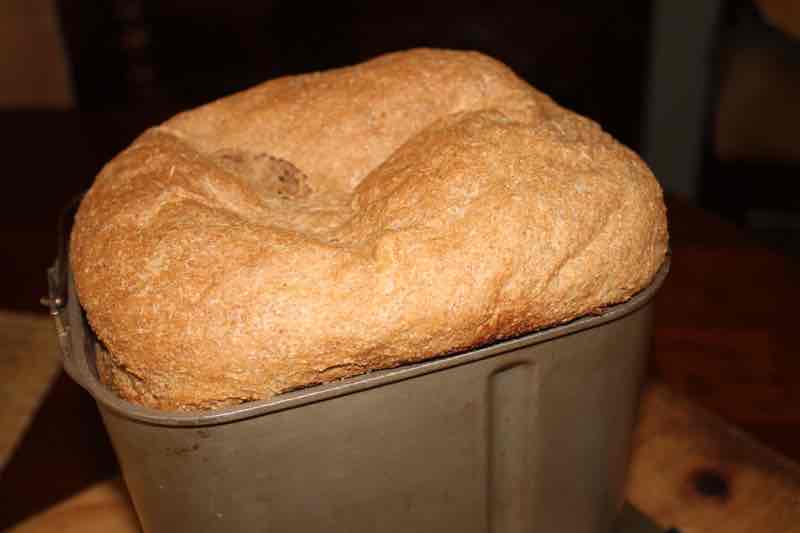
The use of sourdough further improves the taste and glycemic response of wholemeal bread. The acids produced slow gastric emptying.
Choline
Another benefit of baking bread from 100% flour with added hummus is that both the bran and legumes in general are good sources of choline. The average person eating typical grocery store food gets less than half the recommended amount.
The consequences are serious; fatty liver disease and birth-defects like cleft lip.
Take home
The disturbing take-home from this research is that for the diabetic, the glycemic response of wholewheat bread is little if any better than the white loaf. It still needs to be strictly limited unless baked with added chickpea flour; and one slice is definitely enough at any one meal.
Added fat and protein like cheese is further recommended.
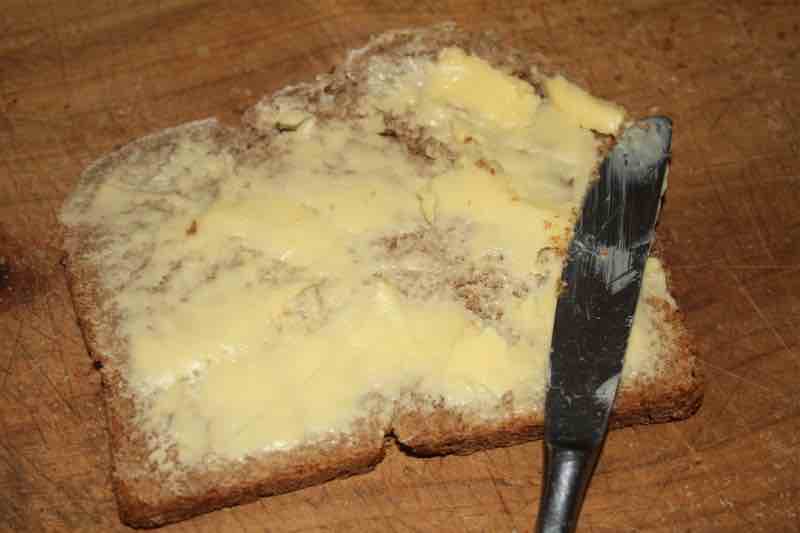 100% real bread and butter
100% real bread and butterWhat is starch in food?
What is starch in food is a question many obese people are asking; is it bad for us? If the fibre, fat and protein fractions have been reduced then it certainly is not healthy. It comes as no surprise to scientists that levels of obesity and diabetes are soaring.
True wholegrain flour is almost impossible to purchase; you have to mill it yourself.
Invest in long-term health by buying a stone mill; they are not cheap but last for ever.
When browsing use right click and "Open Link in New Tab" or you may get a bad gateway signal.
Newsletter
Our newsletter is entitled "create a cyan zone" at your home, preserving both yourself and Mother Earth for future generations; and the family too, of course. We promise not to spam you with daily emails promoting various products. You may get an occasional nudge to buy one of my books.
Here are the back issues.
- Lifestyle and ideal body weight
- What are ultra-processed foods?
- Investing in long-term health
- Diseases from plastic exposure
- Intensive lifestyle management for obesity has limited value
- A world largely devoid of Parkinson's Disease
- The impact of friendly bacteria in the tum on the prevention of cancer
- There's a hole in the bucket
- Everyone is talking about weight loss drugs
- Pull the sweet tooth
- If you suffer from heartburn plant a susu
- Refined maize meal and stunting
- Should agriculture and industry get priority for water and electricity?
- Nature is calling
- Mill your own flour
- Bake your own sourdough bread
- Microplastics from our water
- Alternative types of water storage
- Wear your clothes out
- Comfort foods
- Create a bee-friendly environment
- Go to bed slightly hungry
- Keep bees
- Blue zone folk are religious
- Reduce plastic waste
- Family is important
- What can go in compost?
- Grow broad beans for longevity
- Harvest and store sunshine
- Blue zone exercise
- Harvest and store your rainwater
- Create a cyan zone at your home
Did you find this page interesting? How about forwarding it to a friendly book or food junkie? Better still, a social media tick would help.
- Bernard Preston homepage
- Starch
- What Is Starch in Food
Address:
56 Groenekloof Rd,
Hilton, KZN
South Africa
Website:
https://www.bernard-preston.com